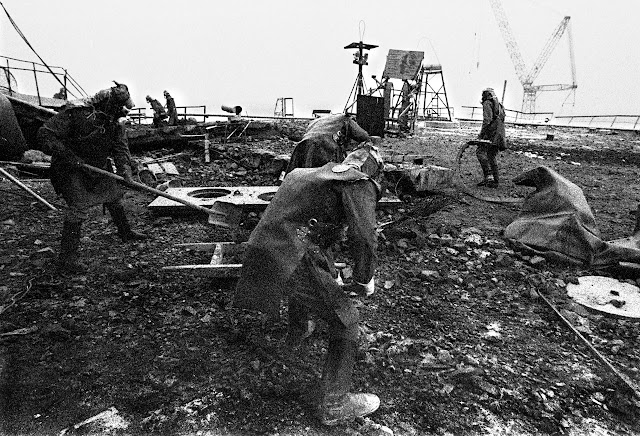I've just finished reading Serhii Plokhy's excellent 2018 book Chernobyl: The History of a Nuclear Catastrophe, and watching some remarkable footage this morning of the liquidators - the brave civil and military personnel tasked with cleaning up the radioactive debris ejected from the stricken reactor 4. Looking at pictures of taken from within Chernobyl’s Zone of Exclusion, the discarded, disintegrating military vehicles; abandoned residential blocks being slowly reclaimed by the wilderness, my thoughts are inevitably drawn to Tarkovsky’s film Stalker and the eerie way the film anticipates life after the aftermath of the Chernobyl disaster. As per the film, the photographers who took these pictures may well have sneaked into the Zone (strict permission is required to pass thru the military checkpoints), and perhaps a guide or a stalker was required to lead them around pockets of radiation - apparently the poisonous radioactive dust that coats the Zone is more prevalent on foliage than asphalt roads. Something else to reflect on was the high number of crew members, including Tarkovsky, who developed cancer in the ensuing years – most probably from working in the poisonous ruins of the Estonian power station where Stalker was filmed. Seeing the film nowadays I can’t help but wince when I see the actors wading thru pools of dirty water (think of the famous shot of Alexander Kaidanovsky dozing in the stream), or negotiating their way thru spaces filthy with toxic dust. Perhaps one can draw a parallel between the Chernobyl liquidators and the Stalker crew - both groups heroically struggling in the face of adversity to complete their missions; the liquidators working to limit the environmental damage, and the Stalker crew battling to get Tarkovsky's film made after the catastrophic loss of the first draft of the film...





No comments:
Post a Comment